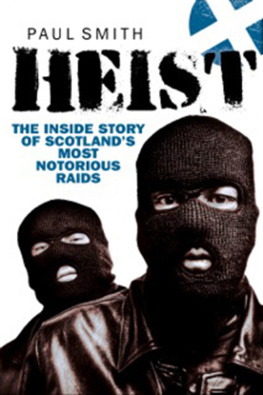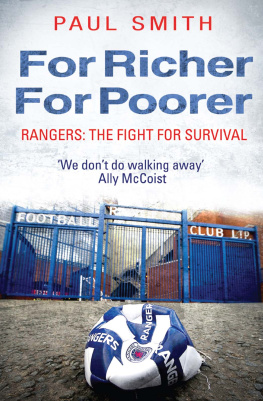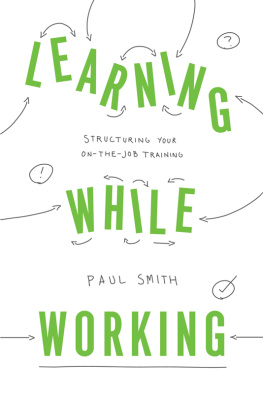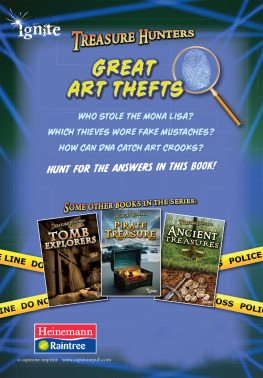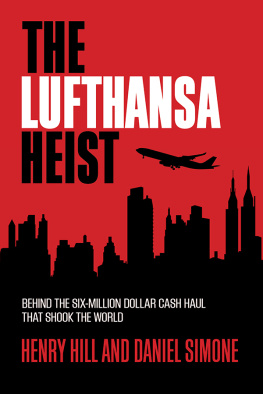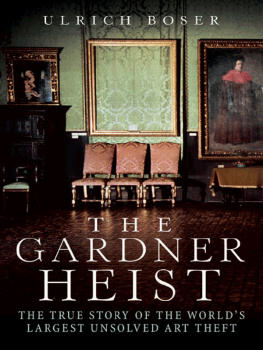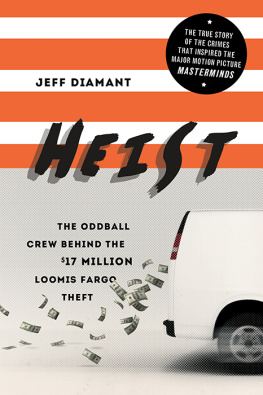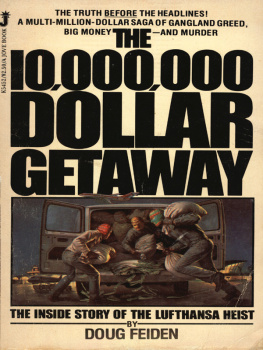Heist

This eBook edition published in 2014 by
Birlinn Limited
West Newington House
Newington Road
Edinburgh
EH9 1QS
www.birlinn.co.uk
Copyright Paul Smith 2014
The moral right of Paul Smith to be identified as the author of this work has been asserted by him in accordance with the Copyright, Designs and Patents Act 1988.
All rights reserved. No part of this publication may be reproduced, stored or transmitted in any form without the express written permission of the publisher.
ISBN: 978-1-78027-198-9
eBook ISBN: 978-0-85790-805-6
British Library Cataloguing-in-Publication Data
A catalogue record for this book is available from the British Library
To Coral, Finlay, Mia and Zara
Contents
Acknowledgments
Few books open with a word of thanks for the men and women of Scotlands police service but it seems fitting to do just that. If the chapters which follow do nothing else, they serve to illustrate the challenges faced by those tasked with keeping us, our money and our possessions safe and secure in the face of quite incredible challenges. The same applies to those working in the security industry who put their own safety on the line every day they get up and go to work.
No book I have worked on has been a solo effort and this project was no different. From those who lent me their time to speak on the record and share their expertise and memories Jean Pandelus and Douglas Campbell to the many who did likewise in an off-the-record manner, the input was valuable. So too was the input from all at Birlinn, from the earliest stage of the project through to the finished article, and Colin Macleod with his continued keen eye and now legendary enthusiasm.
I must also thank the many journalists whose attention to detail, from the 18th century through to the modern day, has helped to preserve intricate detail from which many lessons have been and will continue to be learned.
Most importantly of all, my heartfelt appreciation goes to the most treasured people in my life and the source of eternal inspiration and support Coral, Finlay, Mia and Zara.
Introduction
Heist a single word but one which conjures up images of well-planned and well-oiled criminal machines, carrying out daring raids in an Oceans Eleven style with precision and a degree of charm. Step away from the cinematic portrayals and the glamorous image of the dashing raider and what you find instead is, in fact, a harsh reality that is darker and far grimmer.
Lives have been lost and survivors scarred physically and mentally by those who have made it their mission to get their hands on other peoples money and valuables by any means.
From the outset, the intention of Heist was never to glamorise or sensationalise the crimes detailed in the chapters which follow. Instead, the motivation was to catalogue some of the most notable episodes in Scotlands criminal history and to revisit incidents which, for very different reasons, made a lasting impact on those who found themselves caught up in them.
The sums involved run into tens of millions of pounds but monetary value is a poor barometer in this particular sphere. In every case, there is a human cost which is far more difficult to quantify but far greater than any financial loss.
The breadth of the enterprises covered in the pages of this book paints a picture of the lengths some will go to simply to profit. From murderous attacks to subtle sleight of hand and forgery, there is no textbook heist.
The research process threw up some common threads and familiar patterns, particularly the constant threat of armed robberies. That is something which has existed for centuries and looks set to continue to be a scourge of society for as long as weapons exist. Just as significantly, it also demonstrated the probability of the villains being caught which is high. There is a misconception that those with, for want of a better word, the courage to carry out high-profile heists can get rich quick if they get the detail right. The truth is that very few have succeeded in escaping detection. Sometimes it is instant while on other occasions it may take weeks, months or years but, eventually, past actions have had a habit of catching up with the culprits. If there is a crumb of comfort for the victims of these crimes, surely that is it.
What is clear is that there is no such thing as the perfect crime. Even in those rare cases which remain unsolved and where the proceeds have not been traced, mistakes were always made which gave police impetus for their investigation and positive lines to follow. The fear of a knock on the door must always be there for those who, so far, have evaded capture.
History shows that robbery is not a modern phenomenon, as some cases within Heist demonstrate, but, as time moves on, so does technology. The underworld is being forced to try to keep pace with those advances but there is little doubt that life on the wrong side of the fence is being made tougher all the time. From that, we can all take reassurance. But, as long as there is greed, there will always be temptation. Scotland will remain a target but it will not be just among the local criminal fraternity. From European gangs staging million-pound jewel snatches to cross-border raiders travelling from England, Heist explores a number of incidents in which the finger of suspicion points beyond the home borders.
It also delves into the world of art and antiquities a black market whose worth, globally, is close to that of illegal narcotics as well as into high-tech raids of stolen computer equipment with a value that would have been unimaginable to those guilty of the far earlier crimes of cash thefts and the traditional bank robbery.
Everything from escapes by bicycle, descents through ceilings and the use of JCB diggers to curious cases of the theft of much vaunted rhinoceros heads and priceless paintings by the masters are covered in the following pages. Which takes it back to where we started and cinema script comparisons. These real-life heists are not as you see them in the movies. All too often, the truth is more far-fetched than fiction.
Hitting the Heights
Brutal. Meticulous. Terrifying. Efficient. All four of those words applied in equal measure when a violent gang smashed its way into a Scottish security depot in 1998 to carry out what, to this day, remains one of Britains biggest unsolved robberies. It was not just the 1.3-million cash haul or the military-style precision that set the well-drilled villains apart from their criminal peers their modus operandi also proved unique. After all, why use a door when there is a perfectly suitable roof to provide a point of entry with that all-important element of surprise?
When the masked raiders brandishing shotguns crashed through the ceiling of the Securitas base in Aberdeen on a dark December evening, it marked the start of a horrific ordeal for the shell-shocked staff who had their lives threatened during the course of what was Scotlands biggest-ever armed robbery. But that nights events also marked the end of a long and methodical planning process for a group who succeeded in pulling off what most would have deemed impossible. Even the police officers investigating the crime were left aghast at the audacity of the slick crew, describing their actions as very quick, very efficient and very well planned.
To escape with more than 1 million in cash from the heart of a busy commercial zone displayed a sense of arrogance and aggressive determination seldom seen before or since in Scotland, leaving detectives frustrated and the victims traumatised. A 250,000 reward still sits unclaimed and the police file remains open in the hope that, one day, those responsible will be brought to justice. With every passing year, that looks more and more forlorn, with any thought of recovering the seven-figure sum long since passed for the authorities who were left chasing shadows in the hunt for the perpetrators of what appears to have been the perfect heist.

